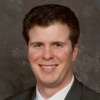Health Care IT Helps Save Patients' Lives
The days of Marcus Welby are truly gone. The doctor diagnosed the patient based mostly on experience, gave the nurse strict orders, and then hoped for the best. Well, that may be more Hollywood than reality, but today’s health care world is very different from the past. Health care now involves sophisticated electronic diagnostic equipment, electronic medical records, and countless treatment options and medicines.
Many health care systems, including OSF Healthcare System, have made it a priority not only to keep up with technology trends, but also to position themselves to take advantage of new technology in the future. For example, OSF’s six hospitals went from paper charting to an electronic medical record (EMR) four years ago. This wasn’t just a technology change, but a culture change within our system. We had to relearn many of the processes taken for granted in the paper system, but the rewards outweighed the inconvenience. Today, our clinicians can access their patients’ records from any computer to make better and faster decisions.
And we continue to move forward with new technology. We recently began deploying a Picture Archiving and Capturing System (PACS) to allow our clinicians to view images online and compare past and current images. In addition, we’re putting in new technology for our surgical areas and in our emergency department to better track and document patient care.
Technology, though, is useless without clinicians. As technology becomes more integrated, we in the health care IT field have learned new methods to support the clinical decision-making. We’ve created reports based on best practices in medicine that alert our caregivers when patients aren’t responding to treatment. These reports are used by Rapid Response Teams (RRTs) to assess patients’ conditions.
RRTs allow any caregiver to activate a team to assess a patient. For example, if a nurse on a late shift feels a patient just isn’t doing well, she can call the team and explain the situation at hand, the background of the patient, her own assessment of the situation, and make a recommendation. This process is called SBAR—a method for quickly briefing on a situation. The team evaluates the patient using the reports created by the EMR system and corresponding best practice knowledge. This process is so successful, it’s considerably reduced the number of “codes” (i.e., heart or respiratory failures) in all of our OSF hospitals that have implemented it, and OSF Saint Francis Medical Center has received national recognition for its progress.
Health care is now more complex and will continue to be as new technology, new understandings, and new treatments continue to be produced. The biggest challenge facing IT is to understand how to integrate technology in a way that supports our caregivers in their daily decision-making. We must constantly be aware that the technology itself isn’t enough—we must be vigilant in how it’s maintained and how it supports those on the front lines of care. We’re part of the “chain of trust” that connects all of us in health care—to provide the best care and the best outcomes for those who come to us in need. IBI

